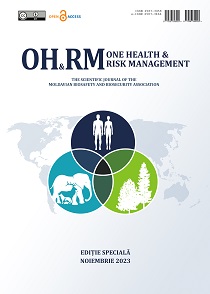Sammendrag
Introduction. Laboratory-acquired infections (LAIs) are a concerning aspect of scientific research and laboratory work. These infections occur when laboratory personnel or researchers are inadvertently exposed to infectious agents while handling biological materials in a laboratory setting. LAIs can involve bacteria, viruses, fungi, or other pathogenic microorganisms. Although most LAIs have no consequence for the worker, the potential consequences of LAIs can range from mild illness to severe, life-threatening conditions, depending on the infectious agent involved and the level of exposure. Some common routes of transmission include inhalation, accidental needle sticks, splashes, or direct contact with contaminated surfaces. To mitigate the risk of LAIs, laboratories must adhere to strict biosafety and biosecurity protocols. These protocols include the use of personal protective equipment (PPE), proper handling and containment of infectious materials, regular risk assessments, and ongoing training for laboratory personnel. Of all LAIs there are no distinguishable accidents or exposure events identified in more than 80% of the reported cases. Additionally, researchers must maintain a culture of safety consciousness. Furthermore, continuous improvement in laboratory practices, advancements in containment technology and collaboration among scientists, safety experts, and health authorities are crucial to minimizing the occurrence of laboratory-acquired infections and safeguarding the well-being of laboratory workers.
Aim. The aim of this presentation is to present two case studies of LAIs at Leiden University Medical Center that were investigated to determine the cause of the LAIs.
Material and methods. The LAIs were investigated by the biological safety officer through interviews and site visits to the laboratories where the causes of the LAIs were supposed to be identified.
Results. The first LAI investigated occurred at the clinical microbiology department. During the diagnostic testing of patient samples, no obvious cause for the patient's disease was found based on routine bacterial cultures. An outdated method of characterizing bacteria, involving the opening of plates and sniffing the odor, was used, although this approach was already prohibited in the biosafety protocols. This method yielded no clues. However, slow-growing bacterial colonies were observed during culturing. Subsequent culturing identified the colonies as Brucella spp. In another case, an LAI was caused by Plasmodium falciparum, the parasite responsible for malaria. This LAI was discovered following a mosquito bite on one of the researchers. Despite efforts to count mosquitoes before and after the experiment to prevent their escape from the isolator, it seems there was a mosquito escape. The researcher's blood was drawn, and the parasites in the blood were cultured. The results of this culturing and identification of the parasites revealed an unnoticed LAI that occurred during malaria research.
Conclusions. Although the level of biosafety and biosecurity at the Leiden University Medical Center is considered to be high, LAIs still occur. The causes of these LAIs are either workers not adhering to biosafety protocols or failures in the containment equipment.
|
 Utsikt: 134|
|
Utsikt: 134|
|
